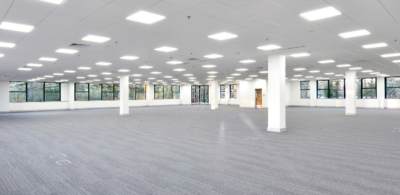So far in this series of posts, we have looked at how law firms can create offices that are true profit enablers and how law firms are responding to the evolution of user expectations. In this final installment of our series, we look at how law firms are rethinking the office design paradigm for a new breed of lawyer.
Appearance is (almost) everything
A law office’s appearance makes a profound statement. Clients who visit form an impression of the firm’s brand, identity and ability to serve them, which affects whether they decide to hire and build a relationship with that firm.
But there’s a delicate balancing act going on. According to Colliers International’s most recent General Counsel Survey, a law firm office must look professional and upscale, but not appear so extravagant that clients feel they might be paying for the space as opposed to simply paying for the firm’s services.
A firm’s workplace appearance can also influence the career decisions of the top talent the firm wishes to attract and retain, as they are likely to compare that firm’s office space to other competing firms. The point: Wisely investing in the design and fit-out of the law office space is a cost that can become a revenue-generating opportunity by making a positive impression on clients and hires. But that’s less than half the battle. What follows is the critical step.
Rethink the office design paradigm for a new breed of lawyer
The large corner office may not entirely disappear, as some within the established legal profession culture still view it as the holy grail. But a new breed of law students and recruits is emerging—the millennials—and their expectations and values differ markedly from their predecessors, the baby boomers and Generation X.
As one of my California-based Colliers colleagues, Jeffrey Weil, puts it: “Millennials want balance in life, flexibility and mobility for when, where and how they work. They desire less hierarchy, more interesting work and greater work-life balance. Sustainability is important and they want to make an impact and difference in and on the world.” Firms will need more open areas, more offices of a similar size rather than a set of hierarchical sizes, and more flexible configurations to address changing priorities.
Consider the example set at the Washington, D.C. law offices of Nixon Peabody, as described in a Washington Post article: “In the new space, all offices—for the junior associates and paralegals as well as senior partners—will be the same size. No one gets a conference table. Everyone has one guest chair. All offices will have glass walls in front, rather than a solid wall and door—the better to share the light throughout the office and the more to signal transparency, democracy and connection. Corner spaces, no longer symbols of individual power, are designed as team meeting rooms for group collaboration.”
These design considerations are not only important for recruiting the next generation of revenue producers for the law firm, but also in retaining the firm’s top talent. After all, there’s no guarantee that the young people working there now will still want to be there in 15 or 20 years—unless, of course, they can work in an environment that meets their needs.
The bottom line: Look beyond real estate as a line item cost
While costs continue to rise, most law firms face flat or modest revenue growth at best. But by thinking of office space not as just a cost, but as an enabler of revenue production and, therefore, more profit, there is a significant opportunity to enhance profitability.
We’ve found that the consistently successful firms are creating workplaces that are comfortable for clients and attractive to top revenue generators, aligning with their lifestyles and helping them do what they do best.
Also: Read Part One | Read Part Two
As president of National Office Services for Colliers, Cynthia Foster leads our national office platform across multiple service lines, including capital markets, tenant representation, leasing agency, property management and valuation.

 Colliers Insights Team
Colliers Insights Team
 Aaron Jodka
Aaron Jodka
 Amber Merrigan
Amber Merrigan
 Andrew Steele
Andrew Steele